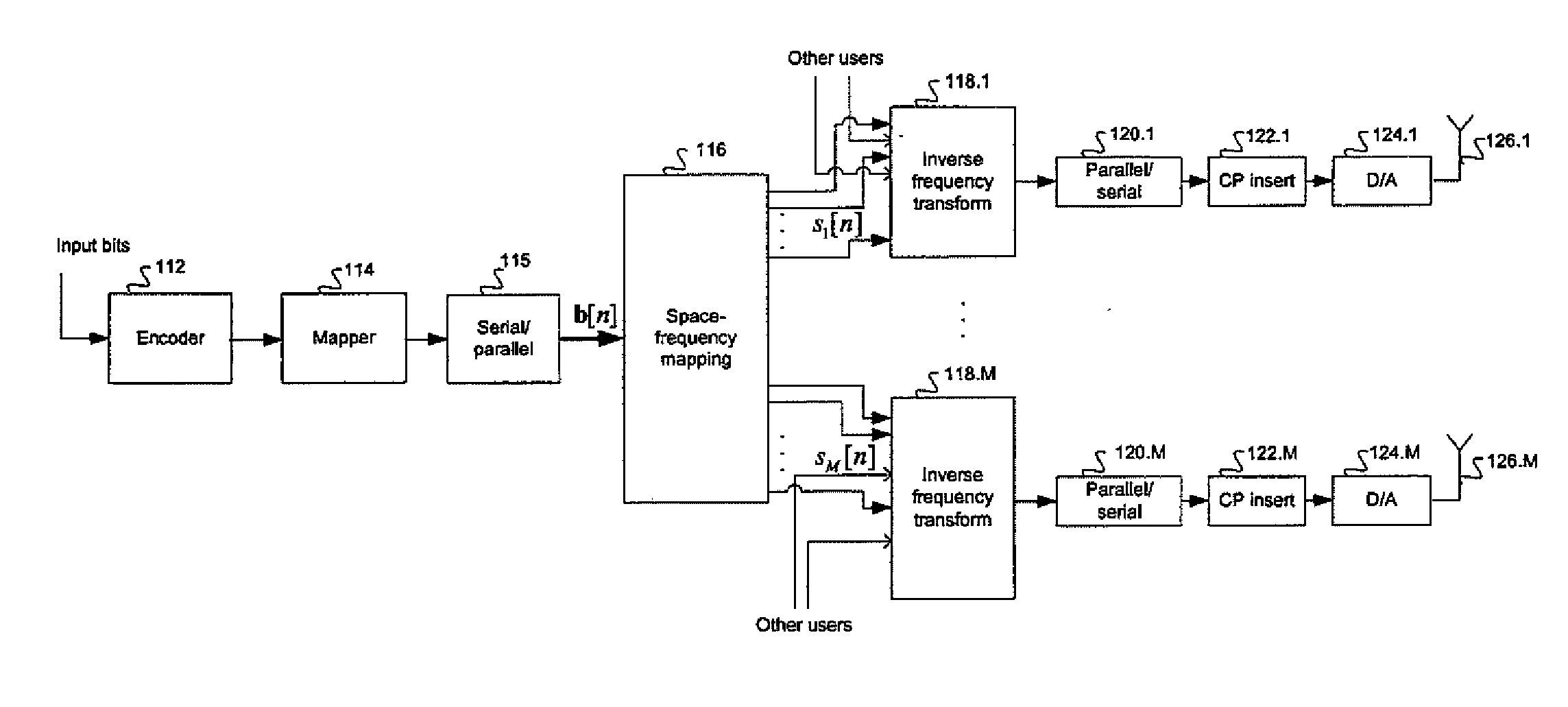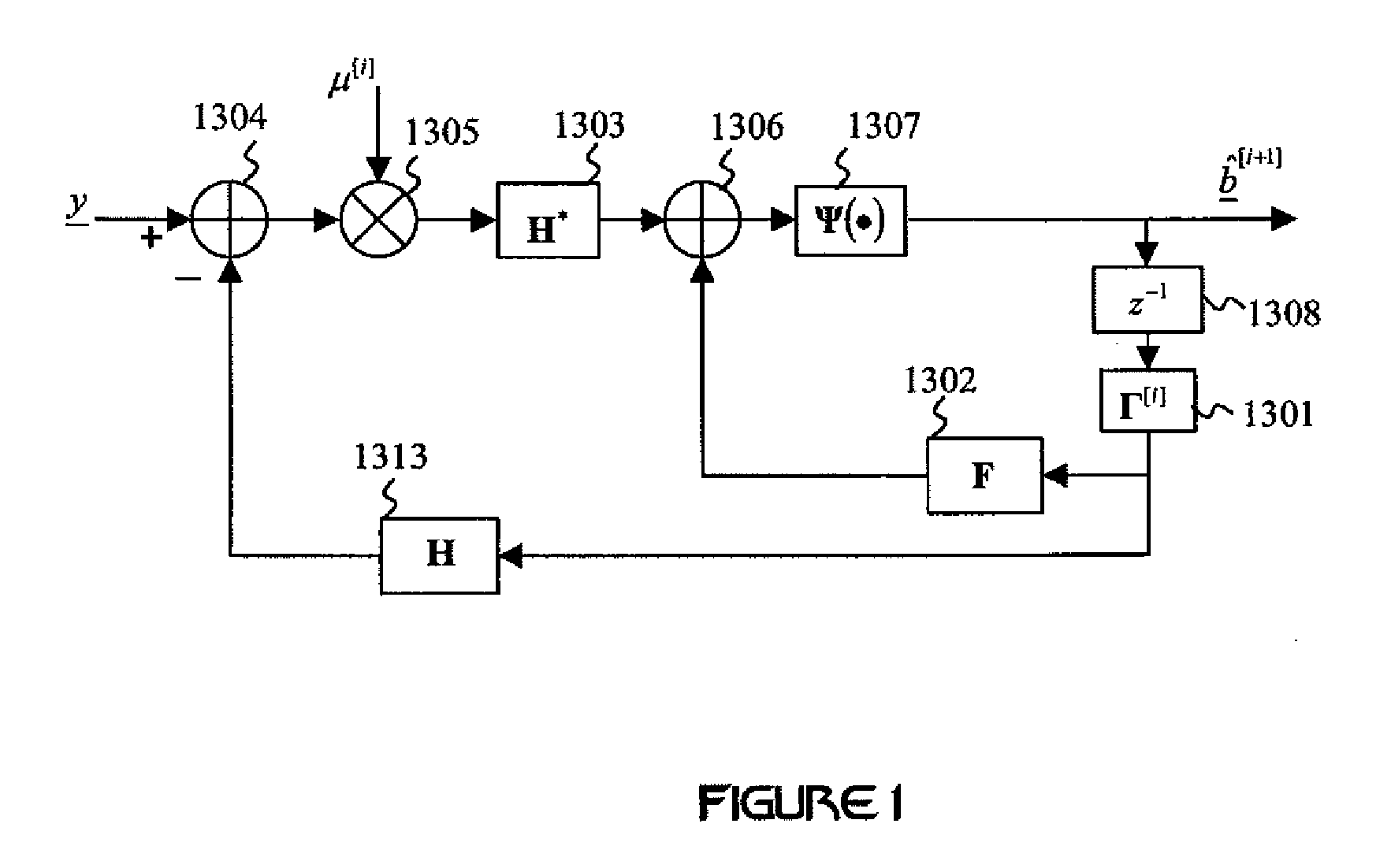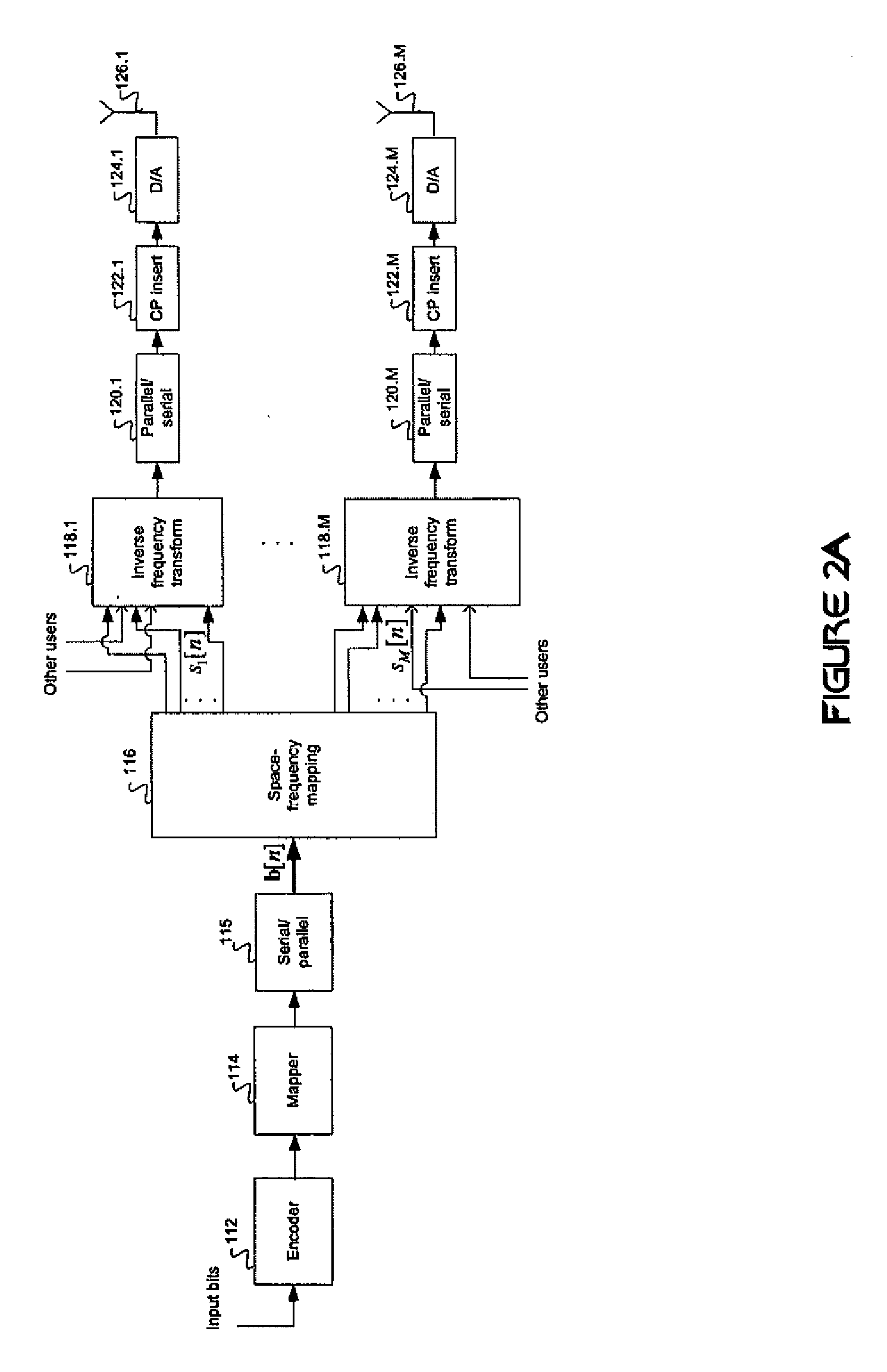Iterative Interference Cancellation for MIMO-OFDM Receivers
a technology of interference cancellation and receiver, applied in the field of interference cancellation in received wireless communication signals, can solve the problems of linear receivers such as the lmmse suffering performance degradation over nonlinear approaches, and cannot achieve the diversity gain availabl
- Summary
- Abstract
- Description
- Claims
- Application Information
AI Technical Summary
Benefits of technology
Problems solved by technology
Method used
Image
Examples
Embodiment Construction
[0037]The present invention will now be described more fully hereinafter with reference to the accompanying drawings, in which preferred embodiments of the invention are shown. This invention may, however, be embodied in many different forms and should not be construed as limited to the embodiments set forth herein. Rather, these embodiments are provided so that this disclosure will be thorough and complete, and will fully convey the scope of the invention to those skilled in the art.
[0038]FIG. 1 shows an iterative interference canceller in accordance with one embodiment of the invention employing a steepest-decent solution. Alternative embodiments may employ other techniques, such as serial interference cancellation, LMMSE, and conjugate-gradient approaches.
[0039]A subtraction module 1304 is configured to subtract input constituent values {tilde over (y)}[i] from a received baseband signal y to produce a difference signal, or error signal, representing the difference between the re...
PUM
 Login to View More
Login to View More Abstract
Description
Claims
Application Information
 Login to View More
Login to View More - R&D
- Intellectual Property
- Life Sciences
- Materials
- Tech Scout
- Unparalleled Data Quality
- Higher Quality Content
- 60% Fewer Hallucinations
Browse by: Latest US Patents, China's latest patents, Technical Efficacy Thesaurus, Application Domain, Technology Topic, Popular Technical Reports.
© 2025 PatSnap. All rights reserved.Legal|Privacy policy|Modern Slavery Act Transparency Statement|Sitemap|About US| Contact US: help@patsnap.com



